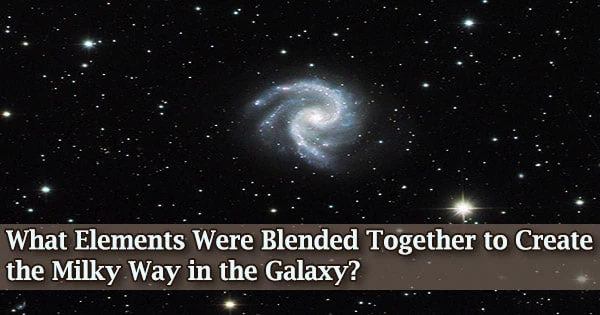When the Milky Way first formed, it resembled a massive smoothie as if galaxies with billions of stars and a massive amount of gas had been combined in an enormous blender.
However, a recent study dissects this mixture by examining individual stars to determine which started off outside the galaxy and which inside.
“Although the Milky Way is our home galaxy, we still do not understand how it formed and evolved,” says researcher Sven Buder from the ARC Centre of Excellence for All Sky Astrophysics in 3 Dimensions (ASTRO 3D) and the Australian National University (ANU).
His study, which was just published in the Monthly Notices of the Royal Astronomical Society, examines starlight in great detail in order to comprehend the factors that contributed to the formation of the Milky Way as we know it today.
“The Milky Way ate up lots of smaller galaxies but, until recently, we did not have enough evidence of that to say for sure,” Buder says. “That’s because simple images of stars in our Milky Way look the same whether they were born inside the galaxy or outside and then blended into the galaxy.”
Buder and members of the Galactic Archaeology with HERMES (GALAH) team used the HERMES (High Efficiency and Resolution Multi-Element Spectrograph) instrument to divide the light from more than 600,000 stars into wavelengths at the Anglo-Australian Telescope (AAT) at Siding Spring Observatory, Australia’s largest optical telescope.
As a result, 600,000 stellar rainbows also called spectra are effectively produced. Each of these rainbows contains distinctive bands of light that change depending on the chemical makeup of the stars, sort of like tiny, individual barcodes.
“If an image is worth a thousand words, these spectra are worth more than a thousand pictures,” says Buder. “By ‘scanning’ these stellar barcodes, we measured how abundant 30 elements, such as sodium, iron, magnesium, and manganese, were, and how they appeared in different concentrations depending on where the star was born.”
The Milky Way ate up lots of smaller galaxies but, until recently, we did not have enough evidence of that to say for sure. That’s because simple images of stars in our Milky Way look the same whether they were born inside the galaxy or outside and then blended into the galaxy.
Sven Buder
With the help of this discovery, scientists may begin to piece together a timeline of the Milky Way’s “childhood” and estimate the size of the galaxies it ate along the way.
“It could also help us understand how several of the features of the galaxy we know today came into being,” says Buder.
Why there are two unique groupings of stars in the disc that humans see as the “milky” band in the night sky is one puzzle that the new observations may help to address.
“The Milky Way spread out across the night sky is a familiar sight, and when we look at it, we are actually gazing into the center of our galaxy with its billions of stars,” says Buder.
“But we are looking at two populations of stars, one much older than the other. The old stars have moved so they look like they bulge out of the main plane of the Milky Way, while the younger stars form a much thinner band in the plane. “But we don’t know why this has happened and our latest findings of the remnants of gigantic, galactic collisions may help us understand,” says Buder.
Based on data from the ambitious Gaia satellite mission, which set out to create a three-dimensional picture of the Milky Way in order to better comprehend its orbits, composition, creation, and evolution, Buder’s research presents the most recent findings.
Because they still travel differently from a typical Milky Way star, the measurements from the Gaia spacecraft can help us identify potential candidates for previously extragalactic stars. However, a star’s chemical fingerprint is the only way to determine its extragalactic origin.





